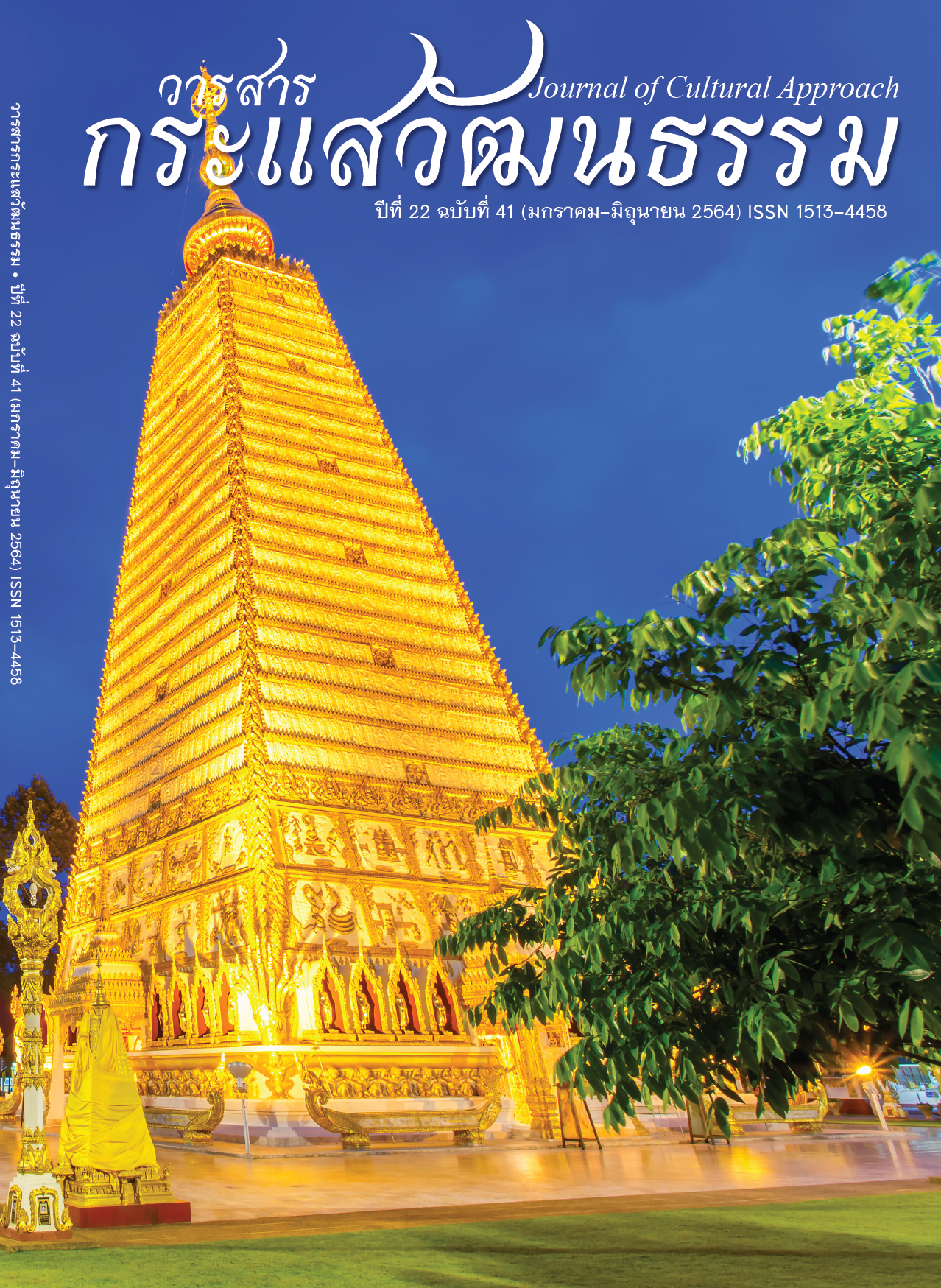The Tourism Management Based on the Social Capital of Ethnic Communities in Maesalong-Nok Sub-district, Mafah Luang District, Chiang Rai Province
Main Article Content
Abstract
This research aimed to analyze the potential of tourism management based on the ethnic community’s capital and to investigate the ways in developing community-based tourism management. This mixed-method study applying structured interviews, questionnaires, focus group discussions, and participatory action research to conduct the study. There were 40 participants in the qualitative part which consisted of community leaders, tourism entrepreneurs, villagers, government officers, and private employees. This study also collected the data from the 385 tourists as the sample in the quantitative part. The statistical program was used to analyze the quantitative data and the qualitative data were categorized and set into the theme.
The preliminary results of the research show that the tourists satisfied with the potential of tourism management of the community at an average level ( = 2.83). The classification of each side found that most tourists satisfied with tourism resources at an average level (
= 3.
26), infrastructure services, and tourism services at an average level (
= 3.04), and tourism marketing at an average level (
= 2.85) respectively. The guidelines in developing the community-based tourism management consisted of 1) providing the tourism resource information to facilitate tourists; 2) developing the potential of tourism personnel to be standardized and 3) establishing a coordination center to drive tourism management of the community.
Article Details
Proposed Creative Commons Copyright Notices
1. Proposed Policy for Journals That Offer Open Access
Authors who publish with this journal agree to the following terms:
- Authors retain copyright and grant the journal right of first publication with the work simultaneously licensed under a Creative Commons Attribution License that allows others to share the work with an acknowledgement of the work's authorship and initial publication in this journal.
- Authors are able to enter into separate, additional contractual arrangements for the non-exclusive distribution of the journal's published version of the work (e.g., post it to an institutional repository or publish it in a book), with an acknowledgement of its initial publication in this journal.
- Authors are permitted and encouraged to post their work online (e.g., in institutional repositories or on their website) prior to and during the submission process, as it can lead to productive exchanges, as well as earlier and greater citation of published work (See The Effect of Open Access).
Proposed Policy for Journals That Offer Delayed Open Access
Authors who publish with this journal agree to the following terms:
- Authors retain copyright and grant the journal right of first publication, with the work [SPECIFY PERIOD OF TIME] after publication simultaneously licensed under a Creative Commons Attribution License that allows others to share the work with an acknowledgement of the work's authorship and initial publication in this journal.
- Authors are able to enter into separate, additional contractual arrangements for the non-exclusive distribution of the journal's published version of the work (e.g., post it to an institutional repository or publish it in a book), with an acknowledgement of its initial publication in this journal.
- Authors are permitted and encouraged to post their work online (e.g., in institutional repositories or on their website) prior to and during the submission process, as it can lead to productive exchanges, as well as earlier and greater citation of published work (See The Effect of Open Access).
References
Chiang Rai Statistical Office. (2017). Provincial Statistics Report 2017. Chiang Rai.
Noppadon Tangsakun. (2011). A Study on Potential for Tai-sak Ethnic Tourism Development at Ban Bha-wa, Tha-Ruea Sub-District, Na-wa District, Nakhon Phanom District. Proceedings of National Conference, Khon Kaen University.
Pattaraporn Jiramahapoka. (2017). Strengthening Human Capital for Community-Based Tourism of Esan-Lanna Community for Promoting Sustainable Tourism. Journal of Cultural Approach, 18(34), 3-17.
Pimlapas Pongsakornrungsilp. (2014). The Management of Sustainable Community-Based Tourism: the Case of Ban Kokekrai, Phang Nga Province. Veridian E-Journal, Silpakorn, 7(3), 650-665.
Ratchada Jirathamakul. (2016). The Development Guidelines for Creative Cultural Community-Based Tourism of Ban Ka-nan Community, Thalang District, Phuket Province. Journal of Cultural Approach, 17(31), 3-17.
Sirinan Pongnirundorn, Ochanya Buatham & Chatchaya Yodsuwan. (2016). Guidelines for Effective Development in Tourism Management of Wang Nam Khiao District, Nakhon Ratchasima Province. College of Graduate Study in Management, Khon Kaen University, 9(1), 234-259.
Siriporn Luekveerawattana. (2010). The Study of the Potential of Palm Furnace Agriculture Tourism Management. Research and Development Journal, 2, 21-29.
Takerngsak Chaichan. (2013). The Quality Development of Ecotourism in Northeastern Thailand. Suranaree University of Technology.
Thongchai Phuwanatwichit. (2016). Cultural Capital Development and Tourism Attraction Management for Culture Village Wiang Tha Kan, Sa Pa Tong District, Chiang Mai Province. Journal of Community Development and Life Quality, 5(1), 14-23.
Wirunsiri Jaima et al. (2015). The Development of Green Tourism in Chiang Rai Municipality for Foreigner Tourist. Thailand Science Research and Innovation.


